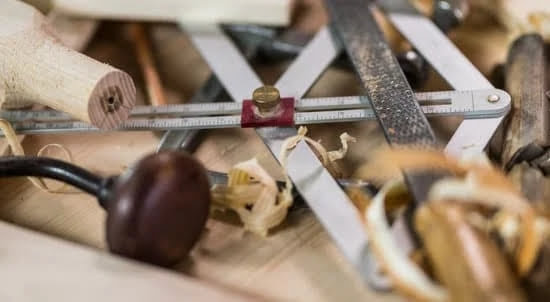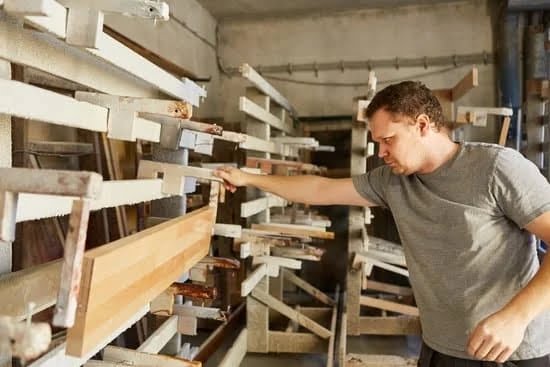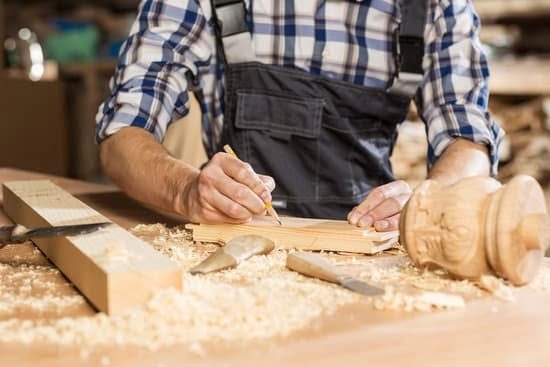What power tools do I need for woodworking? Whether you are a beginner or an experienced woodworker, having the right power tools is essential for successful and efficient woodworking projects.
From cutting and drilling to shaping and finishing, the proper power tools play a crucial role in bringing your woodworking ideas to life. In this comprehensive guide, we will explore the essential power tools needed for woodworking, allowing you to understand the basics and make informed decisions when stocking your workshop.
Woodworking is a timeless craft that requires skill, precision, and a good understanding of different types of wood. From simple DIY projects to complex furniture making, having the right set of power tools can make all the difference in achieving professional-looking results. In this guide, we will take a closer look at various power tools that are indispensable for woodworking projects, providing you with insights on their functionality and importance in your workshop.
By understanding the basics of woodworking and being equipped with the right knowledge about essential power tools, you can embark on your woodworking journey with confidence and efficiency. With this guide, you will be able to identify which power tools are necessary for your specific woodworking needs and how they contribute to the overall success of your projects.
So let’s dive into the world of woodworking and explore the power of power tools in creating beautiful and functional wooden creations.
Essential Power Tools for Woodworking
Woodworking is a craft that requires precision, skill, and the right tools. Whether you’re a beginner or an experienced woodworker, having the essential power tools is crucial to successfully complete woodworking projects. In this comprehensive guide, we’ll explore the must-have power tools for woodworking and how each tool contributes to the overall process of creating beautiful and functional wood pieces.
Power Saw: The Backbone of Woodworking Projects
When it comes to woodworking, a power saw is essential for cutting wood with precision and efficiency. There are various types of power saws to choose from, including circular saws, miter saws, and table saws. Each type has its own specific use, but they all serve as the backbone of woodworking projects by providing clean and accurate cuts.
Drill and Driver Set: Necessary for Precision and Efficiency
A drill and driver set is another indispensable tool in woodworking. Whether you need to create holes for screws or drive screws into wood, a quality drill and driver set will provide the precision and efficiency needed for your projects. Look for a set that includes different drill bits and drivers to accommodate various woodworking tasks.
Wood Router: Versatile Tool for Shaping and Trimming
A wood router is a versatile power tool that allows woodworkers to shape edges, trim materials, create grooves, dadoes, rabbets, and more. With the right router bits, this tool adds decorative touches to your woodworking projects while also offering precise control over cuts. If you’re looking to add detail and customization to your pieces, a wood router is a must-have in your workshop.
Power Saw
The power saw is an essential tool for any woodworking project, serving as the backbone of many creations. There are several types of power saws that woodworkers may utilize, each with its own unique capabilities. A table saw, for example, is perfect for making precise cuts in larger pieces of wood, while a circular saw is more versatile and can be used for a wider range of projects.
One important consideration when choosing a power saw is the type of cuts you will need to make. For straight and angled cuts, a miter saw or a compound miter saw might be the best choice. Meanwhile, for curved or intricate designs, a jigsaw or band saw could be more appropriate.
When deciding what power tools do I need for woodworking, it’s important to invest in high-quality equipment that suits your specific needs and the type of projects you plan to undertake. Understanding the features and capabilities of different power saws can help you make informed decisions about which ones are right for your workshop.
It’s also crucial to prioritize safety when using power tools like saws. Always wear appropriate safety gear such as goggles and ear protection, and follow all recommended safety precautions outlined in the user manual for each tool.
| Power Saw Type | Best Uses |
|---|---|
| Table Saw | Precise cuts in larger pieces of wood |
| Circular Saw | Versatile cutting for a wide range of projects |
| Miter Saw/Compound Miter Saw | Straight and angled cuts |
| Jigsaw/Band Saw | Curved or intricate designs |
Drill and Driver Set
A drill and driver set is one of the most essential power tools you will need for woodworking. Whether you are drilling holes, driving screws, or creating pilot holes for larger fasteners, a drill and driver set will be your go-to tool for precision and efficiency in your woodworking projects.
When it comes to choosing the right drill and driver set for woodworking, there are a few key factors to consider. First, you’ll want to make sure that the set includes both a drill and an impact driver. The drill is perfect for creating clean, precise holes in wood, while the impact driver is ideal for driving screws and other fasteners with ease.
Another important consideration when choosing a drill and driver set for woodworking is the power source. While corded drills and drivers are typically more powerful, cordless options offer greater flexibility and mobility, making them perfect for woodworking projects that require movement around the workshop.
Lastly, don’t forget about the accessories that come with your drill and driver set. Look for sets that include a variety of drill bits and screwdriver bits to ensure that you have everything you need to tackle any woodworking project.
| Brand | Features |
|---|---|
| DeWalt | Cordless options with high-powered motors and long-lasting batteries |
| Bosch | Ergonomic designs with multiple speed settings for precise control |
| Makita | Compact yet powerful sets with brushless motors for extended battery life |
Wood Router
A wood router is a versatile power tool that is essential for any woodworking enthusiast. Whether you are shaping edges, creating intricate designs, or trimming wood, a wood router can handle a variety of tasks with precision and efficiency. In this section, we will explore the different types of routers available and their various uses in woodworking projects.
There are two main types of routers: fixed base routers and plunge routers. Fixed base routers are perfect for edge profiling and cutting dadoes, while plunge routers are ideal for making stopped cuts and intricate designs. Both types have their own set of advantages, so it’s important to choose the right one based on your specific woodworking needs.
One of the primary uses of a wood router is to create decorative edges on wooden pieces. By using different router bits, you can achieve various edge profiles such as round-overs, chamfers, coves, and ogees. Additionally, a wood router is great for cutting grooves, slots, and rabbets in wood to accommodate joints and other fittings. It’s also useful for trimming laminate and veneer edges with precision.
When using a wood router, it’s important to prioritize safety by using proper techniques and protective gear. Always ensure that the workpiece is securely clamped down before routing, and wear safety goggles to protect your eyes from flying debris.
Proper dust extraction should also be considered to maintain a clean and safe woodworking environment. By understanding the versatility of a wood router and its various uses in woodworking projects, you can enhance your skills and achieve professional-looking results in your creations.
Sander
When it comes to woodworking, achieving smooth and flawless finishes is essential for creating high-quality and professional-looking projects. This is where a sander comes in. Whether you are working on a small DIY project or a large furniture piece, having the right sander can make all the difference in the final result.
There are several types of sanders available, each serving a specific purpose in the woodworking process. Here are some of the most common types of sanders that every woodworker should consider adding to their toolkit:
- Belt Sander: Ideal for removing a large amount of material quickly.
- Orbital Sander: Great for general sanding tasks and finishing work.
- Random Orbital Sander: Provides a swirl-free finish and can be used for both stock removal and finishing.
It’s important to consider the specific needs of your projects when selecting a sander. For example, if you primarily work with large pieces of wood, a belt sander may be more suitable for your needs. On the other hand, if you require precise and fine finishes, an orbital or random orbital sander may be the better choice.
In addition to selecting the right type of sander, investing in high-quality sandpaper is crucial for achieving smooth and flawless finishes. Different grits of sandpaper are used for different stages of sanding, from coarse grits for initial stock removal to finer grits for polishing and finishing. With the right sander and sandpaper at your disposal, you can elevate the quality of your woodworking projects and create professional-looking finishes that will impress anyone who sees them.
Jointer and Planer
When it comes to woodworking, having straight and even surfaces is essential for creating high-quality and professional-looking projects. This is where jointers and planers come into play as indispensable tools in the woodworking workshop. These power tools are crucial for ensuring that your wood pieces are perfectly flat, smooth, and uniform in thickness, ultimately leading to the success of your woodworking endeavors.
A jointer is designed to flatten one face and straighten one edge of a board, creating a reference surface that can then be used on other machinery or hand tools. It is particularly useful when working with rough lumber or pieces that have irregular surfaces. On the other hand, a planer is used to bring the opposite face parallel to the reference face created by the jointer, resulting in boards that are perfectly uniform in thickness throughout.
Using these power tools allows woodworkers to achieve precise measurements and create seamless joints when gluing pieces together. Additionally, having straight and even surfaces not only enhances the overall aesthetics of the project but also ensures its structural integrity. With a jointer and planer at your disposal, you can take your woodworking skills to the next level and produce professional-grade results with ease.
Whether you are a seasoned woodworker or just starting out, understanding how to properly use these power tools is crucial for achieving straight and even surfaces in your projects. Investing in quality jointers and planers will undoubtedly elevate the quality of your work and provide you with greater flexibility in creating custom wood pieces that meet your exact specifications.
So, if you find yourself asking “what power tools do I need for woodworking,” make sure to add a jointer and planer to your list for achieving precise and flawless surfaces in your projects.
Woodworking Workbench
A woodworking workbench is an essential component of any woodworking workshop. It serves as a sturdy and reliable platform for carrying out various projects, providing a stable surface for intricate tasks such as cutting, sanding, and assembling. Whether you are a beginner or an experienced woodworker, having a high-quality workbench can greatly enhance the efficiency and precision of your work.
Here are some key features to look for in a woodworking workbench:
- Durable Work Surface: A durable and flat work surface is crucial for ensuring stability and accuracy in woodworking tasks. Look for a workbench with a sturdy tabletop made from hardwood or high-quality laminate.
- Sturdy Construction: The workbench should have a solid and robust construction to withstand the weight of heavy materials and the force exerted during various woodworking operations.
- Ample Workspace: Consider the size of the workbench to ensure that it provides enough space for maneuvering large pieces of wood and accommodating your tools and accessories.
- Integrated Vises and Clamps: Built-in vises and clamps are valuable additions that allow you to secure your workpieces firmly in place, preventing movement or slippage during cutting, drilling, or shaping.
Investing in a well-designed woodworking workbench is essential for creating a conducive environment for woodworking projects. It not only provides stability and support but also contributes to the overall safety and efficiency of your workshop.
In addition to serving as a practical workspace, a woodworking workbench can also offer storage solutions such as drawers, shelving, or pegboards for organizing tools, equipment, and materials. This helps keep your workshop tidy and functional while maintaining easy access to essential items during your woodworking endeavors.
Safety Gear for Woodworking
Woodworking can be an enjoyable and fulfilling hobby, but it also comes with its own set of risks. It’s important to prioritize safety in the workshop, not only to protect yourself but also to safeguard your workspace and equipment. By investing in the right safety gear, you can ensure that you have a safe and accident-free woodworking experience.
Protective Eyewear and Respiratory Protection
One of the most basic yet essential pieces of safety gear for woodworking is protective eyewear. When working with power tools, sawdust and wood chips can easily become airborne, posing a risk to your eyes. Investing in a pair of high-quality safety glasses or goggles can help prevent serious eye injuries.
Additionally, when working with wood, especially when using sanders or routers, it’s important to protect your respiratory system from inhaling fine particles. A dust mask or respirator can effectively filter out harmful dust and debris from the air, ensuring that you breathe clean air while woodworking.
Hearing Protection
The loud noise produced by power tools such as drills, saws, and sanders can cause long-term damage to your hearing if proper protection is not used. Ear plugs or earmuffs are essential for reducing noise levels and protecting your ears from potential harm. In addition to protecting hearing, wearing ear protection can also improve focus and concentration by minimizing distractions from loud noises in the workshop.
Proper Clothing and Footwear
Wearing appropriate clothing and footwear is another important aspect of woodworking safety. Loose-fitting clothing or accessories like scarves or jewelry should be avoided as they pose a risk of getting caught in machinery. Additionally, closed-toe shoes with good traction are necessary to prevent slips and falls while working with heavy materials and power tools. By dressing in the right attire for woodworking, you can minimize the risk of accidents and injuries in the workshop.
By prioritizing safety gear in your woodworking arsenal, you can create a secure environment for both yourself and your projects. Taking proactive measures to protect your vision, hearing, respiratory system, and body will allow you to fully enjoy the craft of woodworking without unnecessary risks or hazards. Remember that investing in high-quality safety gear is an investment in your well-being as well as the longevity of your woodworking journey.
Conclusion
In conclusion, the world of woodworking is a vast and fulfilling endeavor that can be made much easier and more enjoyable with the use of the proper power tools. Whether you are a beginner looking to dive into your first woodworking project or an experienced craftsman expanding your tool collection, knowing what power tools you need for woodworking is essential.
As discussed in this comprehensive guide, power saws, drill and driver sets, wood routers, sanders, jointers and planers are all indispensable tools that can help you achieve precision, efficiency, and flawless finishes in your woodworking projects.
Investing in the right power tools not only streamlines the woodworking process but also opens up endless creative possibilities. These power tools enable woodworkers to work with various wood types, create intricate designs, and produce high-quality pieces with ease. Additionally, having a solid woodworking workbench and proper safety gear adds another layer of efficiency and peace of mind to any workshop.
Ultimately, embracing the power of power tools in woodworking allows individuals to fully unleash their creativity and craftsmanship. By understanding the basics of woodworking and investing in essential power tools for shaping, cutting, smoothing, and refining wood materials, woodworkers can embark on their projects with confidence and produce outstanding results. So whether you are creating furniture, custom cabinetry or decorative pieces-the right power tools make all the difference in elevating your woodworking skills and achieving professional-quality outcomes.
Frequently Asked Questions
What Power Tools Does a Beginner Woodworker Need?
A beginner woodworker will need essential power tools like a cordless drill, a jigsaw, a random orbital sander, a circular saw, and a router. These tools are versatile and can handle a wide range of woodworking tasks.
What Are the 5 Power Tools You May Use as a Woodworker?
As a woodworker, you may use power tools such as a table saw for precise cuts, a miter saw for angled cuts, a band saw for curved cuts, a planer for smoothing rough surfaces, and a jointer for creating flat edges on boards.
Which Brand of Power Tool Is Best for Woodworking?
When it comes to power tools for woodworking, brands like DeWalt, Makita, Bosch, and Milwaukee are often considered top choices due to their durability, performance, and innovative features. Each brand offers a range of reliable power tools that cater to different woodworking needs.

Hi everyone! I’m a woodworker and blogger, and this is my woodworking blog. In my blog, I share tips and tricks for woodworkers of all skill levels, as well as project ideas that you can try yourself.





